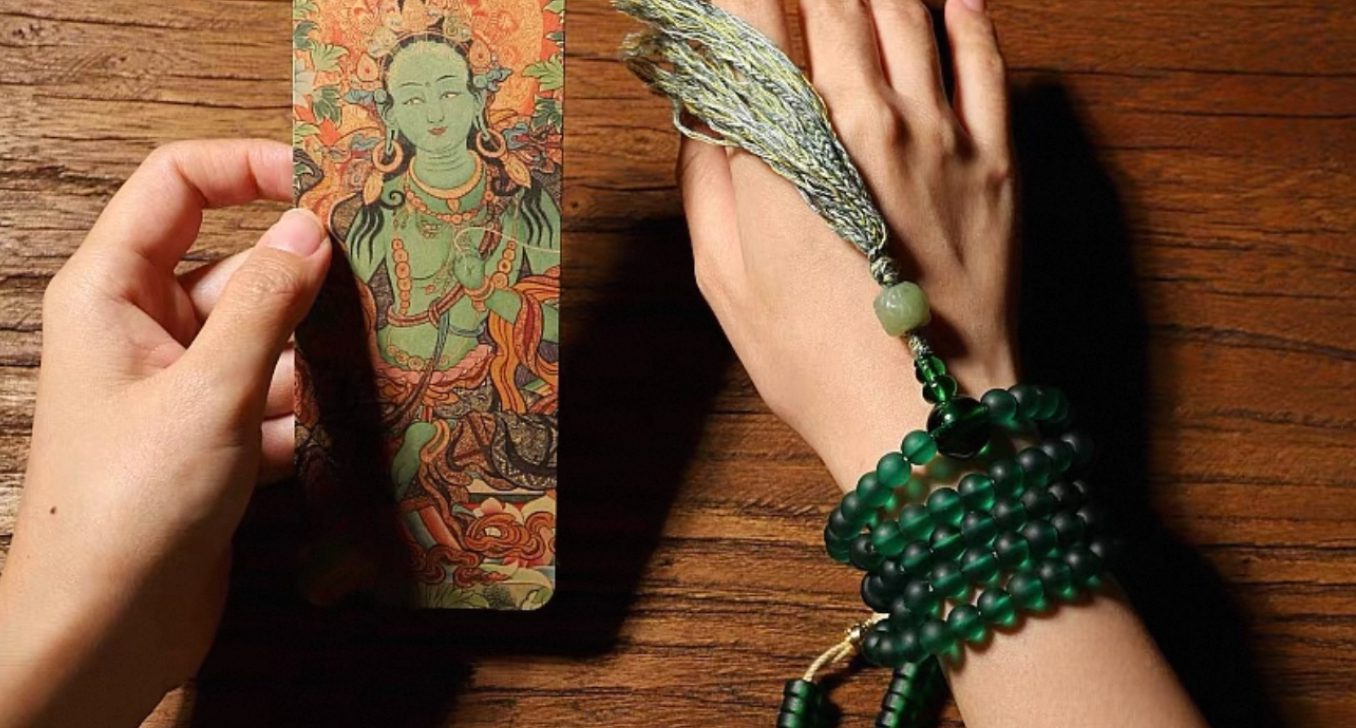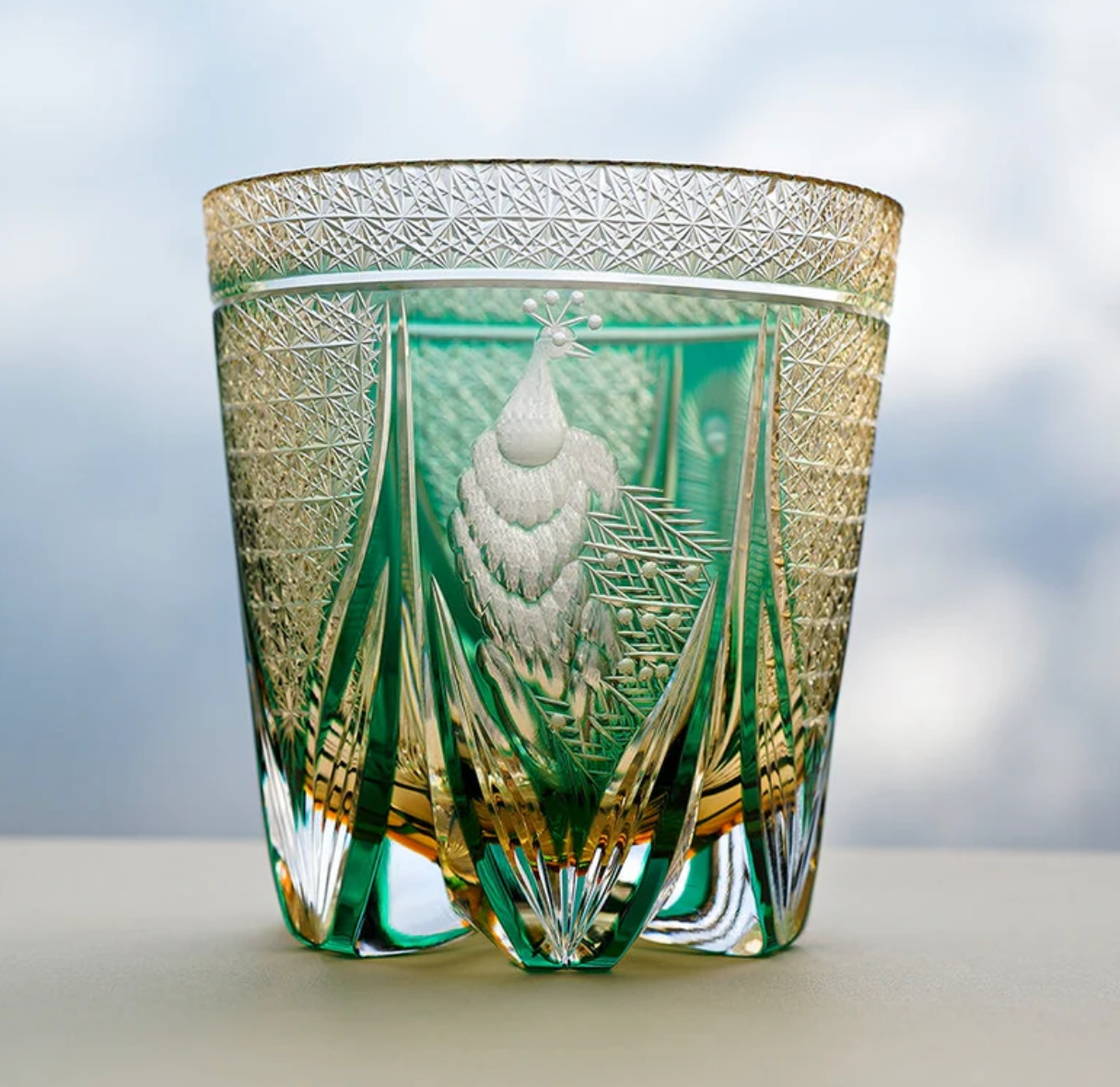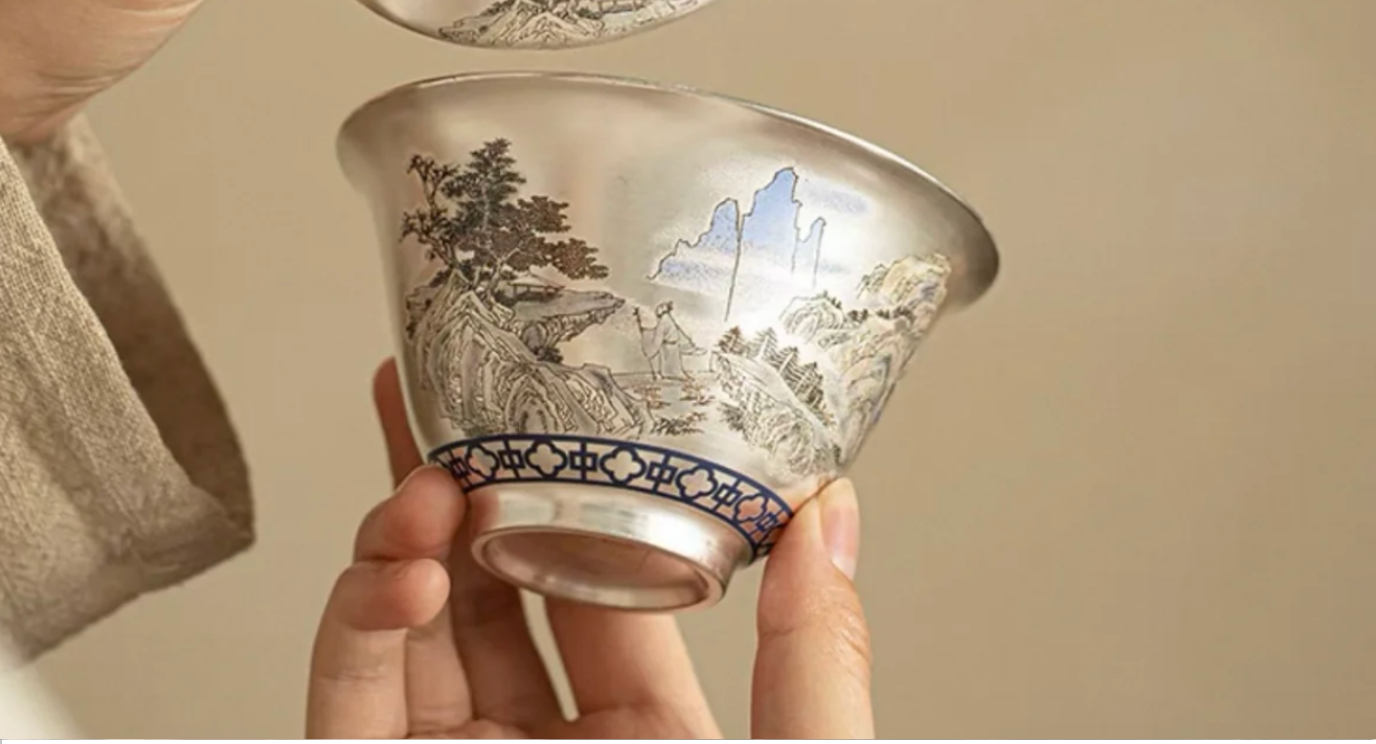
Ultimate Guide to Tibetan Mala Beads: History, Symbolism, and Vajrayana Practice
Tibetan mala beads, known locally as threngwa (Tibetan ཕྲེང་བ), are more than simple adornments; they are sacred instruments of transformation, history, and profound spiritual intent. For practitioners engaging in intensive mantra repetition—a core component of Buddhist practice—the mala serves as a tangible, unwavering anchor for the restless mind. To begin or deepen one’s path requires a nuanced understanding of these tools, tracing their journey from ancient India to the rarefied atmosphere of the Himalayas and recognizing the spiritual energy woven into their very structure.
Echoes of Ancient Wisdom: The History and Cultural Roots of Buddhist Prayer Beads
The origins of the Buddhist prayer beads are steeped in antiquity, predating many of the traditions they eventually influenced. Understanding this history reveals the mala’s universality as a cognitive tool designed to aid human concentration.
From Japa Mala to Threngwa: The Indian Origin of the Garland of Repetition
The history of the prayer bead, or mala, is generally traced back to India, where its earliest known uses are believed to have begun around the 8th century BCE. Initially, these beads were utilized by Hindu sadhus, or holy men, who sought a mechanism to maintain mental focus during rigorous meditation.
The Sanskrit word Mala translates simply to "garland," while Japa means "repetition" or "to utter in a low voice, repeat internally". Thus, the original Japa Mala was explicitly a repetition garland, the predecessor to systems of prayer beads found across many world religions, including the Catholic rosary. The practical purpose of these early malas was fundamental: they helped practitioners keep count of extensive mantra recitations or prostrations. This mechanical function freed the mind from the task of tallying numbers, allowing complete dedication and focus on the spiritual practice itself.
Historical texts reflect this early usage. The Mokugenji Sutra, for instance, records an instance where the Buddha suggests that King Haruri craft a string of beads from seeds (specifically, the soapberry seed of the Mokugenji tree) to be used for mantra recitation. As Buddhism expanded eastward from India across Asia, the practice of using prayer beads spread and adapted to local cultures and materials, eventually becoming a foundational element of Tibetan Buddhist practice.
The pervasive adoption of the mala across diverse cultures—from Hindu japa to Buddhist threngwa to Catholic prayer—is not coincidental; it is rooted in the mala's inherent effectiveness as a tool for mental discipline. The physical, tactile process of moving a bead provides a consistent "kinesthetic cue device" that serves to anchor human consciousness. This physical feedback effectively prevents the mind from wandering during repetitive practice, reinforcing the spiritual commitment with every count and proving the mala’s universal value regardless of the specific religious doctrine.
The Mala in Tibetan Buddhism: A Tool for Tantric Transformation
In Tibet, the mala became inextricably linked with the specialized practices of Vajrayāna Buddhism. Vajrayāna, also known as Tantric or Esoteric Buddhism, is a powerful Mahāyāna tradition that emerged in medieval India. It emphasizes the use of esoteric rituals and techniques—including the extensive repetition of mantras, known as Mantrayāna—as a path toward rapid spiritual awakening and the transformation of ordinary experience into enlightenment.
For the Tibetan practitioner, the mala is not just an aid to focus; it is a critical instrument for the accumulation of merit. Many core Vajrayana practices require practitioners to repeat specific sacred sounds (mantras) thousands, tens of thousands, or even hundreds of thousands of times. The mala provides the necessary precision to track these vast spiritual accumulation efforts.
The spiritual hierarchy of Vajrayana, emphasizing an unbroken lineage and direct transmission from the spiritual teacher (Guru) to the student, is physically reflected in the construction of the mala itself. The prominent Guru bead, which marks the end of the circuit, symbolizes the vital role of the teacher as the source of guidance and awakening.
Decoding the Sacred Structure: Mala Symbolism and the 108 Count
The structure of the traditional mala is deeply symbolic, acting as a miniature map of cosmic existence and spiritual purification. Understanding these symbolic components reveals the profound intention behind using the traditional 108 beads.
The profound Meaning of 108 Beads: Bridging Cosmos and Consciousness
The standard mala consists of 108 counting beads. This number carries immense significance, both cosmically and internally.
The cosmic importance of the number 108 dates back to ancient Vedic culture, where it was revered as the number of existence. This sacred figure is reflected in Hindu cosmology through multiple correspondences: 108 Vedic Upanishads (sacred texts), 108 sacred sites across India, 108 marma points (sacred sites on the body), and the convergence of 108 major energy lines at the heart chakra. The repetition of a mantra 108 times represents a spiritual journey, where each repetition moves the practitioner one unit closer to the universal or divine source.
In Buddhism, the significance is internal and purifying: the 108 beads traditionally represent the 108 human defilements or passions (kleshas). By undertaking one complete circuit of 108 mantra recitations, the practitioner aims to symbolically transcend or purify all 108 afflictions, transforming these negative tendencies into inherent wisdom.
In the Tibetan tradition, the count is further refined to ensure completeness and purity of practice. While 108 beads are used, only 100 are strictly counted as the core recitations. The additional eight beads are added to compensate for any omissions, errors, or flaws that may have occurred during the recitation, thereby guaranteeing a full and pure accumulation tally. By ritually confronting and transforming all 108 aspects of human suffering and imperfection with each round, the practitioner utilizes the mala as a map of spiritual transformation, covering the full distance required for awakening.
The Role of the Guru Bead (Meru) and the Tassel
The Guru Bead—also referred to as the Meru bead or mother bead—is the distinctive 109th, and usually larger, bead that connects the two ends of the loop. Crucially, this bead is never counted during recitation; its function is solely to indicate the starting and ending point of the practice.
Symbolically, the Guru bead is of central importance. The term Guru means "teacher" or "dispeller of darkness" in Sanskrit, and the bead represents the personification of the practitioner's spiritual teacher. It stands for discernment, leadership, and the divine direction provided throughout the spiritual journey. The strict protocol of halting at the Guru bead, offering a moment of thanks or mental bowing, and then reversing direction (flipping the mala rather than crossing over) is an explicit act of respect toward one's spiritual teachers. Crossing over is considered profoundly disrespectful, akin to "stepping over one's teacher".
Furthermore, the integrity of the cord itself carries deep meaning in Vajrayana. Malas are traditionally strung using three, five, or nine threads. These specific counts are highly symbolic: three strings represent the Three Kayas (enlightened bodies of the Buddha); five strings symbolize the Five Dhyani Buddhas; and nine strings represent the Nine Vehicles of practice.
The Tassel, often made of silk or cotton, finishes the mala structure. It symbolizes the lotus flower, which represents purity, transcendence, and higher consciousness emerging unstained from the mud. The tassel signifies a connection to one’s highest truth and is sometimes utilized to diffuse essential oils, adding an aromatic dimension to the meditative practice.
Specialized Counts in Tibetan Practice: Beyond the Traditional 108
While 108 remains the standard for general recitation, Vajrayana practice demands specialized tools, meaning bead counts can vary according to the specific ritual activity being performed. These variations align with the "Four Activities" (or Four Rites) of Tantra, each aimed at a specific energetic outcome. The use of varied mala counts illustrates the profound depth and precise ritual requirements of advanced Vajrayana practices.
| Practice Category (Activity) | Purpose | Bead Count (Excluding Guru Bead) | Associated Energy/Focus |
| Peaceful (Śāntika) | Purification, Harmonizing, Healing | 11, 21 | Stability, Calmness, Longevity |
| Increasing (Pauṣṭika) | Accumulating Merit, Enhancing Wisdom/Wealth | 108 | Abundance, Expansion, Standard Recitations |
| Magnetizing (Vaśya) | Drawing Favorable Circumstances, Connection | 54 (Half Mala) | Influence, Attraction, Relationship Building |
| Wrathful (Abhicāraka) | Overcoming Obstacles, Forceful Transformation | 21 | Protection, Discipline, Removal of Duality |
Traditional Mala Materials and Their Spiritual Energies
The material chosen for a mala is not merely an aesthetic choice; it is an active spiritual ingredient intended to amplify or direct the energy of the recitation. Traditional Tibetan malas rely heavily on materials that embody core philosophical concepts or possess specific energetic properties.
The Reminder of Impermanence: Understanding Yak Bone Malas
Perhaps the most potent material in Tibetan practice is yak bone. In a culture deeply reliant on the yak for survival, the use of its bones reflects a respect for the animal and ensures that no resource is wasted.
Philosophically, yak bone serves as a tangible, forceful reminder of anicca (impermanence), one of the three foundational marks of existence in Buddhism. Meditating with a yak bone mala compels the practitioner to confront the transient nature of life, the inevitable decay of the physical body, and the urgency of spiritual practice. This practice transforms the morbid concept of death into an enlightening spiritual realization. Furthermore, the resilience and strength symbolized by the yak means that bone malas are often utilized in powerful, wrathful protector deity practices in Mahayana Buddhism, offering protective and grounding qualities.
It is important to clarify that traditional Buddhist prayer beads are made from the bones of animals like the yak or cow. Only certain, highly specific ritual implements, such as the kangling (ceremonial horn) or kapala (skull cap), are sometimes crafted from donated human bones, a practice considered a profound honor for the deceased individual and strictly separate from the making of malas.
Seeds and Sacred Wood: Bodhi, Rudraksha, and Rosewood
Organic materials carry distinct energies that align with specific spiritual goals.
Bodhi Seeds are particularly sacred, derived from the tree under which the historical Buddha attained enlightenment. These seeds are cherished as emblems of compassion, wisdom, and spiritual growth. Using a Bodhi seed mala is believed to foster mindfulness and deepen one's meditation practice, supporting emotional balance and strengthening the path toward awakening.
Rudraksha Seeds, known as the "Tears of Shiva" in Hinduism, are also widely used in Nepalese and Tibetan tradition. They are valued for their purifying and protective properties and are thought to carry the compassionate consciousness and divine knowledge of Lord Shiva.
Rosewood is a prized wood, especially in India, and is selected for its dark color and strong association with grounding and protection. Meditating with Rosewood is said to dispel negativity and connect the practitioner to the Heart Chakra, promoting compassion, love, and forgiveness.
Gemstones: Amplifying Intention and Healing Properties
For practitioners focused on specific energetic alignments or healing properties, gemstone malas are highly desirable. These stones are chosen because their inherent "vibrational frequencies" are believed to promote balance and spiritual transformation. The selection of a gemstone mala transforms the tool from a mere counter into a conduit that actively amplifies or directs the energy of the mantra recitation toward a specific intention.
| Material Type | Example Material | Primary Symbolism/Focus | Key Energetic/Healing Property |
| Bone | Yak Bone | Impermanence (Anicca), Strength | Resilience, grounding, protection against negative energy. |
| Sacred Seed | Bodhi Seed | Enlightenment, Spiritual Growth | Fosters mindfulness, deepens practice, emotional balance. |
| Sacred Wood | Rosewood | Grounding, Compassion | Dispels negativity, connects to Heart Chakra. |
| Gemstone | Lapis Lazuli | Wisdom, Truth | Spiritual insight, stress reduction, mental endurance. |
| Gemstone | Turquoise | Protection, Peace | Heals the spirit, balances male/female energy. |
| Gemstone | Amethyst | Spirituality, Contentment | Intuition, calming energy, concentration. |
Among the most important gemstones in Tibetan practice are:
-
Turquoise: Highly valued for its spiritual and protective properties. It provides peace of mind, heals the spirit, and balances dualistic characteristics.
-
Lapis Lazuli: A deep blue stone linked to wisdom, truth, and spiritual insight. It enhances objectivity, clarity, and mental endurance.
-
Quartz: Especially clear quartz, which is a powerful amplification stone, increasing both thought and body energy and aiding concentration.
The Artisan’s Touch: Why Craftsmanship Matters for Your Spiritual Tool
For an object intended to carry the weight of spiritual aspiration and accumulated practice, authenticity and integrity in craftsmanship are non-negotiable. An authentic mala serves not only as a tool but as an artifact infused with centuries of tradition.
Meticulous Knotting and Authentic Lineage
In the Himalayan region, the process of creating a mala transcends typical craftsmanship; it is viewed by the devoted masters as a sacred meditation—a physical act of devotion that imbues the beads with the blessings and serene energy of the dharma.
A hallmark of a high-quality, authentic mala is the meticulous hand knotting placed between each bead. This practice ensures the durability of the strand and maintains the sacred integrity of the string, which, as noted, symbolically represents core Buddhist tenets like the Three Kayas or the Five Buddhas. The resulting "exceptionally tight knots" are a physical manifestation of the artisan's unwavering discipline.
When selecting a mala, seeking products rooted in traditional lineage offers assurance of quality and spiritual integrity. For example, the collection at Oriental Artisan reflects the dedication of practitioners like the matriarch Pema Dolma, who specializes in traditional materials such as fragrant sandalwood and yak bone, and her son Tenzin Norbu, who honors traditional techniques while incorporating new, ethically sourced gemstones. This continuity of spiritual craftsmanship guarantees that the mala is a genuine conduit for deepening practice.
Selecting Your Mala: Alignment, Intention, and Quality
The decision of which mala to choose is deeply personal, guided by intuition and the specific spiritual intention the practitioner seeks to manifest. Whether the seeker is drawn to the grounding protection of Rosewood, the purifying energy of Rudraksha, or the wisdom of Lapis Lazuli, the tool must align perfectly with the user’s ultimate goal.
Because the mala absorbs and holds the energy of countless recitations, its quality directly impacts the efficacy of the practice. By choosing an artisan-crafted mala that is hand-strung and infused with the pure intention of devoted masters, the practitioner ensures their tool is built to withstand years of rigorous practice and remains a genuine extension of their spiritual commitment. The exquisite, high-quality collection offered by Oriental Artisan provides the necessary foundation for anyone serious about commencing or advancing their spiritual journey.
How to Use a Mala: Step-by-Step for Japa Meditation
The proper use of a mala, known as Japa meditation, is a simple yet profound ritual designed to maintain concentration and transform repetition into conscious spiritual practice.
Setting the Groundwork: Intention and Posture
Before beginning, the practitioner must establish correct motivation, a crucial element, particularly in Vajrayana. This correct motivation is often referred to as Bodhicitta—the sincere, single-pointed intention to dedicate the practice and accumulated merit for the benefit of all sentient beings. It is advisable to spend a quiet moment reflecting on this intention and the goal one hopes to manifest through the practice.
The Mechanics of Mantra Recitation
The mala is typically held in the right hand. The method of counting involves using the thumb to gently pull or slide the beads toward the practitioner, one by one. The beads should rest over the middle finger or ring finger of the right hand.
In many traditions, including Hindu and sometimes Tibetan practices, the index finger is specifically avoided, as it is considered the "accusing" or pointing finger, deemed inappropriate for sacred activity. Some practitioners prefer the middle finger due to the belief that a nerve runs through this finger, connecting to the spine, potentially offering a subtle energetic boost or acupressure benefit during the practice.
The practice begins with the first counting bead immediately to the right of the Guru bead. As the practitioner touches this bead, the chosen mantra is recited—spoken, whispered, or chanted—in its entirety before moving to the next bead.
The Rule of the Guru Bead: Reverence and Reversal
Once a full circuit of 108 beads is completed and the practitioner returns to the Guru bead, a crucial protocol must be observed. The Guru bead is never counted. To maintain respect for the symbol of the spiritual teacher, the practitioner must not cross over it.
Instead, upon reaching the Guru bead, the practitioner pauses, offering a moment of silent reverence or gratitude to the guru or divine source. The mala is then flipped or reversed, and the practitioner begins the next circuit immediately in the reverse direction, starting from the bead just touched.
Integrating the Mala: Tactile Cue and Focused Awareness
The primary psychological benefit of the mala lies in its function as a tactile anchor. By providing a physical sensation to accompany the verbal and auditory repetition of the mantra, the process gains an additional, kinesthetic dimension. The consistent movement of the bead prevents the mind from performing the mantra mechanically; the physical sensation acts as a reminder that "wakes you up again". This tactile cue helps maintain a state of flow and deep concentration, assisting the practitioner in reaching profound meditative states that might otherwise be difficult to achieve through silent practice alone.
Advanced Vajrayana Practice: Utilizing Mala Counters for Deep Accumulation
Vajrayana Buddhism often entails monumental accumulation practices, requiring practitioners to track tens of thousands or even millions of mantra repetitions. For this level of dedication, the standard 108-bead mala is augmented with specialized counting tools.
Tracking the Thousands: The Vajra and Bell Counters
Traditional Tibetan malas used for accumulation are frequently equipped with a pair of counters, typically attached near the 21st or 27th bead on either side of the Guru bead. These counters are often highly symbolic, crafted from brass or silver, and feature the forms of the Vajra (Dorje) and the Bell.
The counter system transforms simple arithmetic into a ritual offering imbued with profound meaning. The Vajra symbolizes indestructible power, wisdom, and skillful means, while the Bell symbolizes compassion and emptiness. Their use together represents the essential union of wisdom and compassion necessary for enlightenment.
Each counter generally consists of a strand holding ten smaller rings or beads. The practitioner designates one counter (often the Vajra side) to track the hundreds, and the other (the Bell side) to track the thousands.
The counting protocol works as follows:
-
After completing one full circuit of the 108 mala beads, one small ring/bead is moved forward on the hundreds counter.
-
Once the practitioner has moved all 10 beads on the hundreds counter (signifying 10 full mala circuits, or roughly 1,080 mantras), the hundreds counter is reset, and one bead is moved forward on the thousands counter.
Each pair of counters can efficiently track up to 10,000 mantra recitations. For those engaged in even deeper, life-long accumulations, special clips known as Bhum Counters (sometimes called "million markers") are used. These clips are attached between the main 108 beads and track accumulation in increments of tens of thousands, hundreds of thousands, or even millions of mantras, ensuring accurate documentation of vast spiritual efforts.
Maintaining Sacred Integrity
Due to the intense energy and merit infused into malas used for accumulation, Tibetan teachers often advise strict protocol. Malas used for formal practice are sometimes kept separate from malas worn publicly. These "clean" accumulation malas are carefully stored in a dedicated bag when not in use to protect the infused spiritual energy and maintain their sanctity. They are considered sacred ritual objects and are treated with the highest degree of reverence.
Caring for Your Sacred Tool: Cleansing, Charging, and Respectful Protocol
To ensure the longevity of the physical materials and the energetic purity of the spiritual tool, proper care, cleansing, and storage are essential.
Daily Maintenance and Storage for Longevity
Malas, especially those made from gemstones or crystals, are fragile and must be handled gently to prevent breakage. For general cleaning, a mala can be gently wiped or soaked in warm water with a small amount of mild liquid dish soap, then patted dry.
Organic materials, such as Bodhi seeds and sacred woods, require specific attention. In dry climates, these materials may crack or dry out, shortening the mala’s lifespan. It is recommended to periodically moisturize them using a small amount of oil, such as mineral, coconut, or sandalwood oil, rubbing it thoroughly into the beads once every few months or annually. The natural darkening that occurs over time in organic beads is a positive visual reminder of the deepening commitment to practice.
When not in use, the mala should be stored respectfully in a cool, dry place, ideally within a small, breathable pouch or cloth bag, and placed on a meditation altar or dedicated safe space. It should be kept out of water, direct sunlight (which can fade certain materials), and should never be worn during strenuous activities that might cause it to snag or break. Should a mala break, it is often seen not as a misfortune, but as a potential sign of growth, a release of accumulated energy, or the completion of a karmic cycle.
Energetic Cleansing and Charging Rituals
Because malas absorb and store energy—both positive accumulation and inadvertent negative transfer (such as from being touched by others)—they require occasional energetic cleansing.
Several traditional methods exist for purification:
-
Smudging: Passing the mala through the smoke of cleansing agents like white sage or incense while visualizing negativity leaving the beads.
-
Sound Bath: Using the strong vibrations from a ringing singing bowl, gong, or bell to cleanse and energize the beads.
-
Light Charging: Placing the mala in direct moonlight (often favored for its gentle energy) or sunlight for several hours.
-
Crystal Cleansing: Positioning the mala on or within a cluster of high-vibration cleansing crystals, such such as amethyst, clear quartz, or selenite, for at least 24 hours.
-
Visualization: Holding the mala and visualizing pure white light descending from above, traveling through the body and into the beads, infusing them with positive energy.
Respectful Conduct and Consecration
For Tibetan practitioners, maintaining the purity of the mala extends to daily conduct. Texts such as the Bon Sutra outline specific prohibited behaviors intended to prevent the sacred tool from becoming contaminated. These include avoiding stepping on the mala, mixing different bead materials on the same strand, hanging it from a belt, or throwing it in a casual manner.
A mala can be empowered or consecrated either formally or through practice. Consecration is often performed by lineage holders, such as Tibetan nuns, who bless the beads after they are crafted. For lay practitioners, the mala is empowered simply by maintaining deep respect for the object and setting the correct, pure motivation (Bodhicitta) before practice, praying to the chosen deity and requesting the blessings of the lineage gurus. A mala's true power resides in the practitioner's intention and continuous, respectful use.
Conclusion: Starting Your Spiritual Journey with an Authentic Tibetan Mala
The Tibetan mala, or threngwa, represents a complete system of spiritual dedication. It functions simultaneously as a historical artifact, a cosmological roadmap (through the 108 beads), a sacred representation of the teacher (the Guru bead), and a highly efficient tool for generating merit through extensive mantra accumulation (aided by Vajra and Bell counters).
The choice of material—whether the transformative reminder of impermanence embodied by Yak Bone, the enlightenment symbolized by Bodhi Seed, or the specific energetic alignment offered by high-quality Gemstones—is the choice of spiritual trajectory itself. An authentic mala becomes a reservoir of positive energy and a constant, tactile reminder of one's commitment to presence and compassion.
To embark upon or enhance one’s journey into Japa meditation and Vajrayana practice, a tool of genuine, artisan quality is required. The meticulously hand-knotted and ethically sourced collections available at Oriental Artisan offer tools built with spiritual integrity and steeped in Himalayan tradition, ensuring practitioners acquire a durable and consecrated companion for their ultimate spiritual path.




Leave a comment
This site is protected by hCaptcha and the hCaptcha Privacy Policy and Terms of Service apply.